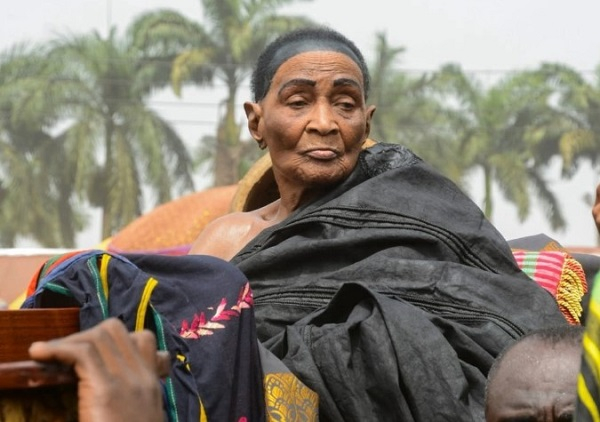- The Assinhene of Otumfuo, Nana Yaw Akuoko, has likened royal funerals in Asanteman to moments of war, marked by intense emotion and deep symbolism.
- The burial of the late Asantehemaa, Nana Konadu Yiadom III, is steeped in tradition, with every element—from attire to regalia—carrying cultural weight.
- Otumfuo Osei Tutu II’s ceremonial dress featured tendrils and pepper, symbolizing grief and the discomfort of loss.
- The Kuntunkuni cloth, worn by mourners, represents emotional intensity and is traditionally paired with Kyawkyaw slippers.
- The queen mother’s final journey includes a symbolic stop at the Bantama Royal Mausoleum before her interment at Breman Royal Mausoleum.
- The rites reflect Asanteman’s view of death as a spiritual battle and a communal reckoning.
In the heart of Kumasi, the burial rites of the late Asantehemaa, Nana Konadu Yiadom III, have unfolded with solemn grandeur, revealing the layers of symbolism that define Asante royal tradition. As explained by Nana Yaw Akuoko, the Assinhene of Otumfuo, funerals in Asanteman are not mere ceremonies—they are spiritual battles, emotionally charged and culturally profound.
The atmosphere surrounding the queen mother’s burial has been likened to war, not in violence, but in emotional intensity. The Kuntunkuni cloth, worn by mourners, is more than black fabric—it is a visual declaration of grief. Embossed with Adinkra symbols and dyed in deep hues, it signals the weight of loss and the communal mourning that binds Asanteman together.
Otumfuo Osei Tutu II’s regalia during the rites spoke volumes. His headgear, adorned with trailing tendrils, mirrored the restless nature of sorrow—grief that clings and sways like vines in the wind. The pepper embedded in his attire symbolized the sting of death, a discomfort that cannot be ignored. These elements, woven into royal presentation, captured the emotional landscape of the moment.
The queen mother’s final journey is equally symbolic. Her procession made a sacred stop at the Bantama Royal Mausoleum, where ancestral rites were performed, before continuing to the Breman Royal Mausoleum—her eternal resting place. This path reflects the spiritual transition from the earthly realm to the ancestral fold, guided by tradition and reverence.
As Asanteman bids farewell to Nana Konadu Yiadom III, the rituals serve not only to honour her legacy but to reaffirm the cultural depth of a kingdom where mourning is a collective act, and symbolism is the language of the soul.



